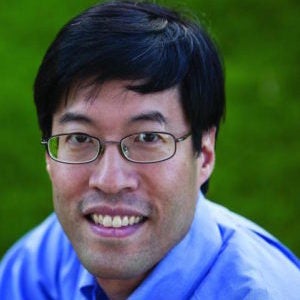3 Questions for Dr. Richard Pan, MPH ’98

As a California State Senator and Chair of both the Senate Committee on Health and the Senate Budget Committee on Health and Human Services, Dr. Richard Pan, MPH ’98, guides California state policy on pandemic preparedness and COVID-19 response and educates the public about COVID-19 prevention and mitigation.
Q1: What challenges is California’s health care system facing with COVID-19?
Primary care and outpatient practices have had a dramatic drop in visits, which is how health care professionals get paid. We’ve also had an increase in expenses because we need PPE and so forth. We’re expecting 2 million more people on our Medi-Cal program. How do we be sure we have enough people to take care of them?
Immunization rates have [also] fallen, and we don’t need another outbreak of something else on top of COVID-19. And what if we can boost our flu vaccination rate from 40% to 70% or 80%, for example? That would reduce the number of beds that we’ll need for flu, in case we need more beds for coronavirus.
And of course, continuing to ramp up our testing and getting the tests to the right people, and getting our contact tracers out there. We’re going to have a problem with people actively resisting contact tracing. That’s going to be a challenge. Then we have to have places to isolate people safely.
[I’ve been] trying to draw more attention to the need to better fund our public health system. We may not know what the outbreak’s going to be, but there’s always going to be an outbreak of something every year. We need to build our infrastructure.
Q2: What other problems resulting from the pandemic will you and your colleagues be working on?
The outbreak is underlying a lot of different things. Millions of people have lost their jobs. We have small businesses that are closed. We have food being grown in the fields but people without enough food in the cities. You have kids at home who can’t go to school. But at the same time you have essential workers who need to go to work. What do they do when they have no school or child care? Being an elected official is the ultimate generalist job, because everything comes at you, from all sorts of different directions. So how do you try to coordinate, but also be sure you prioritize?
California began as a success story. We’ve flattened the curve but didn’t bend it downward enough. We need the number of cases to drop to shift from mitigation to containment. Then, how do we make that shift in a way that doesn’t cause a big spike in the number of cases and deaths? Of course now the big thing is with the economic downturn, figuring out a state budget at a time when people need more and we have a lot less money.
Q3: What have been the challenges in getting the public to understand and follow guidelines?
We have competitors who are actually trying to spread disinformation very intentionally. We have the WHO being undermined. We have the CDC being silenced. Then on social media, we have people protesting against every public health intervention that we need to employ to slow the spread of this disease, and even actually trying to attack the very data that we use.
As public health advocates, we’ve got to figure out some strategies to turn this around because otherwise we’re in big trouble. Some of my time is spent on Twitter and Facebook and other social media, trying to push back on the disinformation. I’m doing a lot of press interviews. I’m part of a radio show weekly. We did telephone town halls and now I do a podcast. As an elected leader I am sort of in the center of this, but I think it’s important that other leaders in public health, including in academia, lend their credibility and their efforts to fighting this.
